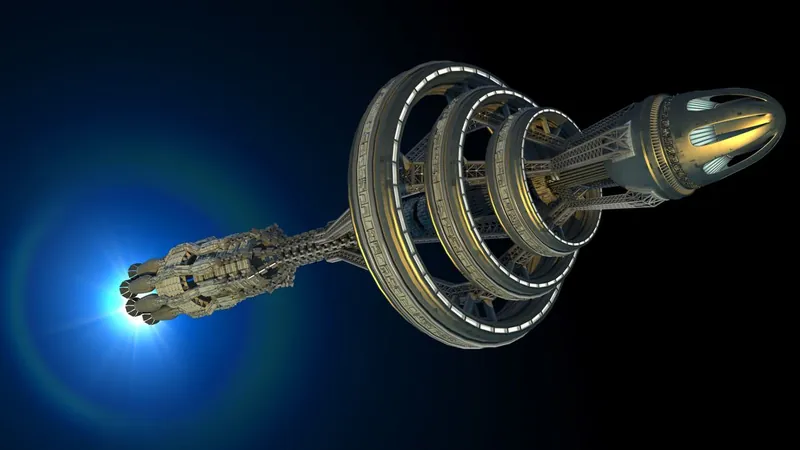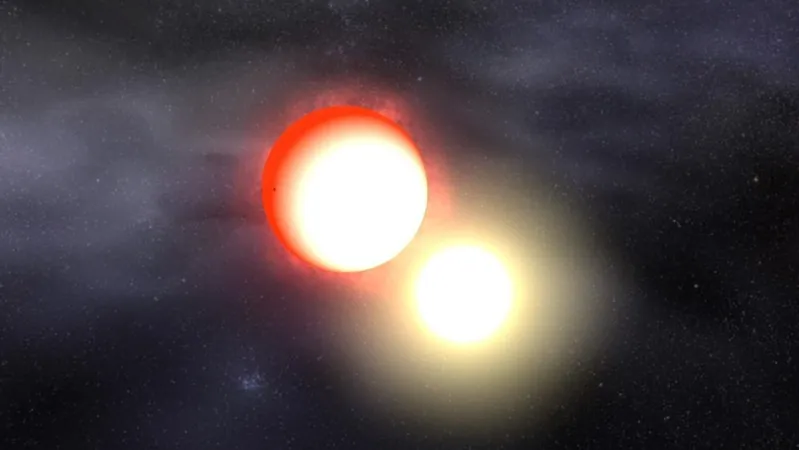
Redefining Space Travel: Join the Race to Design the Ultimate Interstellar 'Generation Ship' with Project Hyperion!
2024-11-05
Author: Jacques
Redefining Space Travel
Humanity's boundless curiosity has already pushed the limits of exploration beyond our planet and into the vast expanse of our solar system. However, as our technological capabilities advance, the dream of reaching distant star systems may no longer be just a shimmering mirage. Scientists speculate that one day, we may yearn to explore a rocky, life-sustaining world orbiting a nearby star. But how can we transform this dream into reality?
The Journey to the Stars
The journey to another star poses monumental challenges. Even if we invent propulsion technology capable of traveling at a staggering 10% the speed of light—far beyond our current capabilities—some trips could still take several decades or even centuries. To tackle this conundrum, researchers and science fiction visionaries have proposed an intriguing concept: the "generation ship." This theoretical spacecraft would house human occupants for multiple generations during the extensive journey to new worlds.
Project Hyperion
In pursuit of this goal, Project Hyperion has launched a groundbreaking design competition, inviting innovative minds to submit their visions for a crewed interstellar generation ship. This initiative aims to explore the practicalities of long-term human space travel using existing and emerging technologies. Moreover, the project seeks to educate the public on the possibilities and challenges of interstellar exploration.
Designing the Future
This isn't merely about designing propulsion systems or the vessel's structural integrity; the focus is on crafting an ideal habitat and social system for inhabitants over a prolonged voyage. Teams participating in the competition must comprise at least one architectural designer, one engineer, and one social scientist, leveraging diverse expertise to create a well-rounded vision of life aboard a generation ship.
Submission Guidelines and Constraints
The submission guidelines include several fascinating constraints: - The mission's duration would span a whopping 250 Earth years—an entire lifetime for many! - The destination is a rocky planet that will support an artificial ecosystem, previously evaluated by a precursor probe. - The generation ship must simulate Earth-like gravity through rotation. - Atmospheric conditions must replicate those found on Earth, ensuring a familiar environment for occupants. - Safety measures must protect inhabitants from harmful radiation and any potential impacts. - The design should cater to a community of 1,000 to 1,500 inhabitants throughout the journey.
Key Considerations for Design
Designers must carefully consider various factors that contribute to the wellbeing and productivity of the ship's inhabitants, drawing insights from both real-world space missions and imaginative storytelling. Some of these key considerations include: - **Privacy**: How will the ship's layout allow individuals to find personal space within a tightly-knit community? - **Mental Health**: What architectural elements can replicate Earth's environment to promote psychological well-being during the journey? - **Conflict Resolution**: What systems should be established to handle disputes and ethical challenges that may arise among crew members? - **Intimacy**: How can the design facilitate relationships, ensuring inhabitants maintain meaningful connections? - **Social Hierarchy**: How will roles and responsibilities be assigned and managed within the ship's society? - **Connection to Earth**: What mechanisms will keep inhabitants emotionally and culturally linked to their home planet?
Evaluation Criteria
Submissions will be evaluated on various criteria, including the functionality of the living space, aesthetic appeal, and technical aspects such as resource management and sustainability (like food, water, and waste recycling). Moreover, the social framework's effectiveness and its capacity to foster a thriving community will also come under scrutiny.
Conclusion
Project Hyperion represents a remarkable opportunity to rethink how we view not just interstellar travel, but the core nature of human society in extreme conditions. As we embark on this joint journey towards the stars, the ideas generated from this competition could serve as a foundation for the future of space exploration—and potentially, the survival of our species beyond Earth. Are you ready to be part of this cosmic quest?









 Brasil (PT)
Brasil (PT)
 Canada (EN)
Canada (EN)
 Chile (ES)
Chile (ES)
 Česko (CS)
Česko (CS)
 대한민국 (KO)
대한민국 (KO)
 España (ES)
España (ES)
 France (FR)
France (FR)
 Hong Kong (EN)
Hong Kong (EN)
 Italia (IT)
Italia (IT)
 日本 (JA)
日本 (JA)
 Magyarország (HU)
Magyarország (HU)
 Norge (NO)
Norge (NO)
 Polska (PL)
Polska (PL)
 Schweiz (DE)
Schweiz (DE)
 Singapore (EN)
Singapore (EN)
 Sverige (SV)
Sverige (SV)
 Suomi (FI)
Suomi (FI)
 Türkiye (TR)
Türkiye (TR)
 الإمارات العربية المتحدة (AR)
الإمارات العربية المتحدة (AR)